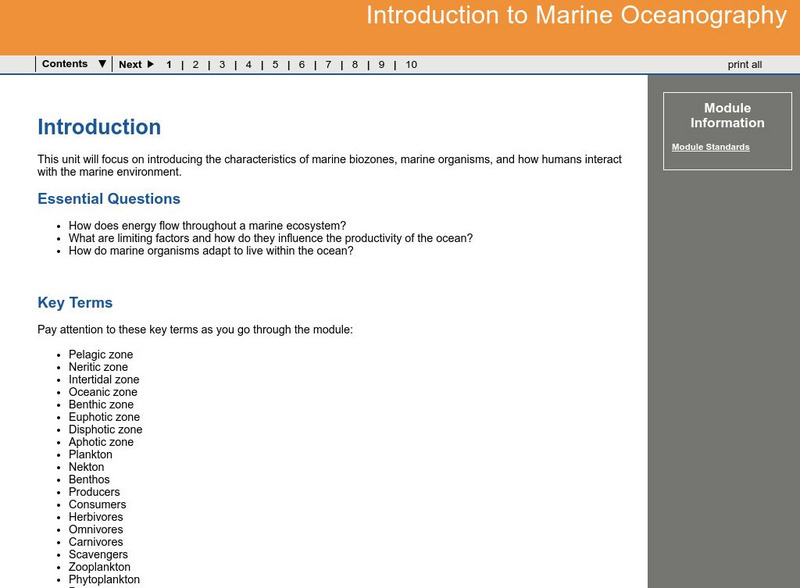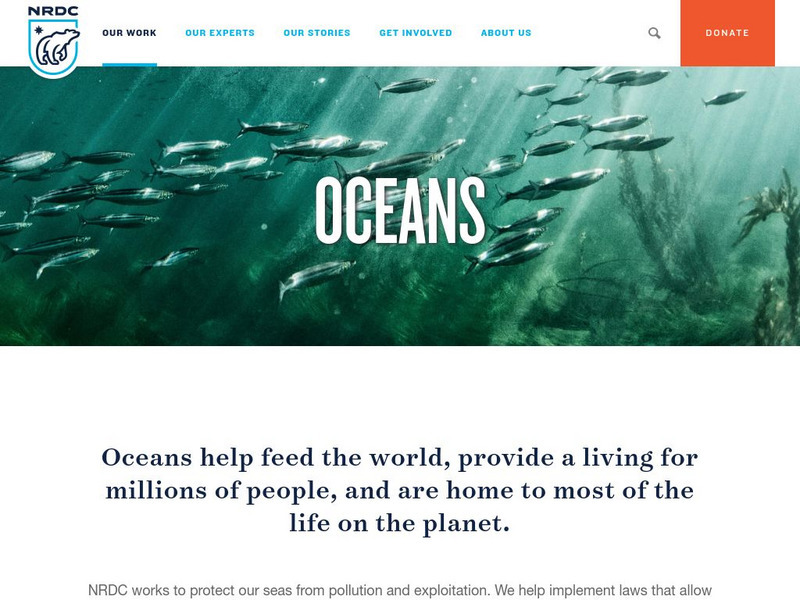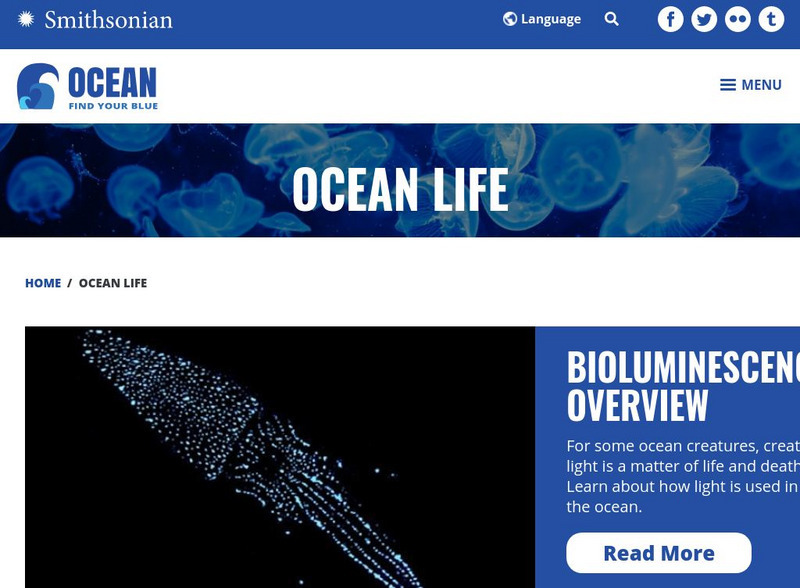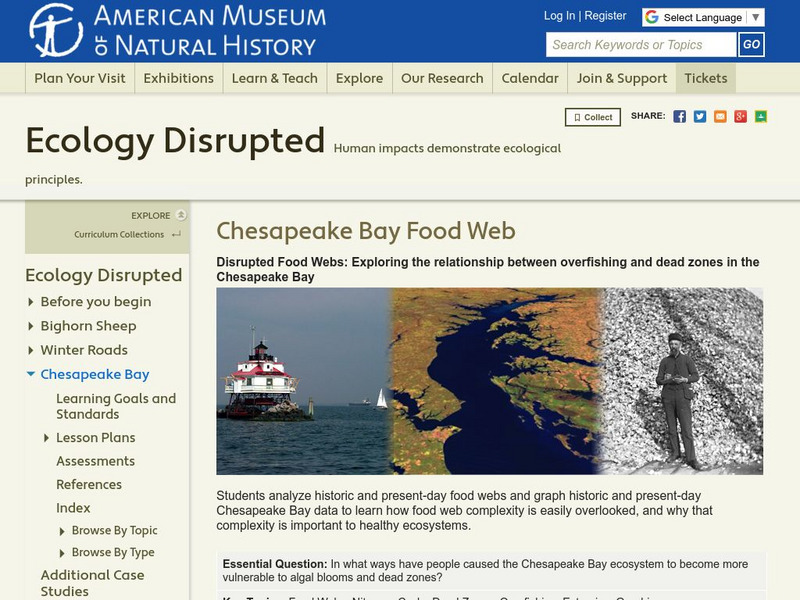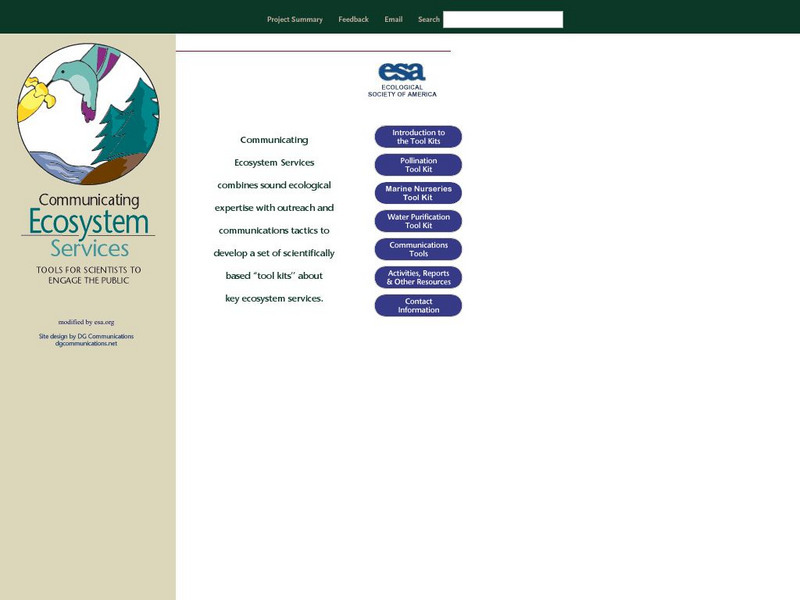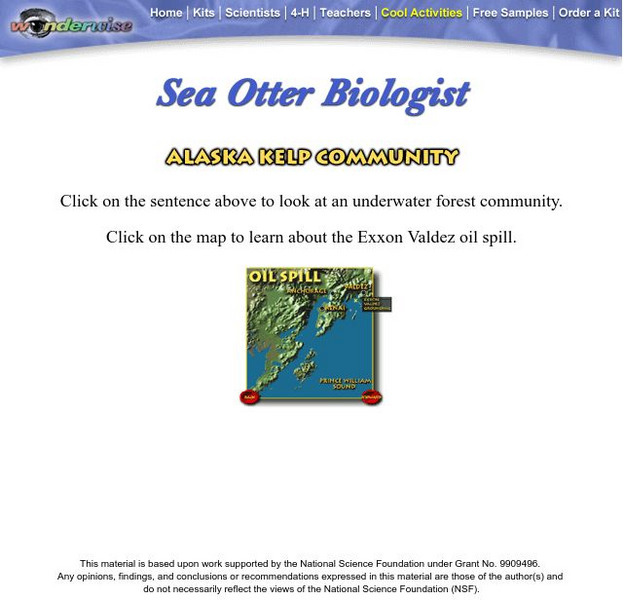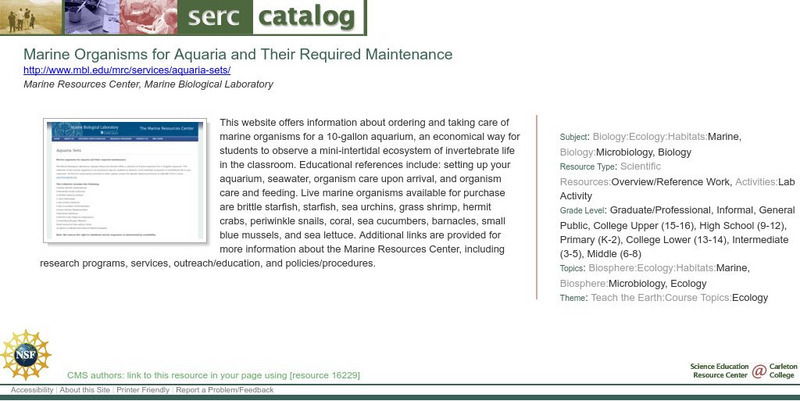National Geographic
National Geographic: Mapping Marine Ecosystems
Marine ecosystems are examined in this lesson. Students identify examples of different types and locate them on a world map. Includes handouts, website links, and a vocabulary list with definitions.
National Geographic
National Geographic: Human Impacts on Marine Ecosystems
This lesson focuses on how human activities are impacting marine ecosystems. Includes handouts.
Nature Conservancy
The Nature Conservancy: Coral Reefs of Palau: Nature's Amazing Underwater Cities
This lesson takes students on a virtual field trip to the coral reefs of Palau where they will explore amazing underwater cities found near a remote network of islands in the Pacific Ocean. Learn all about an ecosystem of symbiosis....
Untamed Science
Untamed Science: Biology: World Biomes: Coastal Oceans Biome
Explore photos, watch video clips, and learn about the aquatic biome located above the continental shelf. [8:37]
Georgia Department of Education
Ga Virtual Learning: Introduction to Marine Oceanography
Students learn about marine biozones, marine organisms, and how humans interact with the marine environment.
Georgia Department of Education
Ga Virtual Learning: Ap Environmental Science: Aquatic Biomes and Ecology
Students explore Earth's most important natural resource, water, and learn about how the planet's aquatic biomes thrive and support life.
Other
National Resources Defense Council: Your Oceans
Learn about issues that are major threats to the health of our oceans; read personal stories of how these threats affect people whose lives are connected to these valuable resources. Includes possible solutions and things you can do to...
American Museum of Natural History
American Museum of Natural History: O Logy: Marine Biology: The Living Oceans
This resource is a place for exploring, asking questions, finding information, meeting scientists, and learning about marine ecosystems.
NOAA
Noaa: Estuaries: Noaa: Science Data: Graphing
Create graphs of marine ecosystems using real-time data.
Other
Noaa: Large Marine Ecosystems of the World
A detailed look at large marine ecosystems throughout the world. See animated maps showing the growth of chlorophyll in oceans, seas, and river systems.
Smithsonian Institution
National Museum of Natural History: Ocean Portal: Ocean Life & Ecosystems
From the tiny to the titanic, from the familiar to the undiscovered, the ocean offers a stunning diversity of marine life and nearly every kind of habitat imaginable. Dive in and explore them here. Links incude stories, videos and photos...
American Museum of Natural History
American Museum of Natural History: Ecology Disrupted: Chesapeake Bay Food Web
In this comprehensive activity unit, students examine how overfishing has affected Chesapeake Bay's ecosystem. They will study food webs from the past and present and graph related data.
Other
Ecological Society of America: Communicating Ecosystem Services
A large collection of resources to aid professionals, community members, and educators in communicating the role and importance of ecosystem services. Issues addressed include pollination, marine nurseries, and water purification....
Nature Conservancy
The Nature Conservancy: Nature Lab
These wonderful virtual field trips allow students to explore a coastal rain forest or the coral reefs in the Dominican Republic, and so much more.
NOAA
Noaa: Ocean Facts on Marine Fish Habitats
The depletion of marine fish habitats from NOAA affects more than just the fish - it can affect you too! Learn facts about the importance of habitat preservation for science, and for people like you.
NOAA
Noaa: Giant Tubeworms [Pdf]
Read about thermal vent communities. Then identify key characteristics of the giant tubeworm through reading and creating a three-dimensional model of this organism.
E-learning for Kids
E Learning for Kids: Science: Australia: How Do Environments Affect Living Things?
Noah lives near the Great Barrier Reef. Go explore this diverse habitat with him.
University of Nebraska
University of Nebraska State Museum: Alaska Kelp Community
Discover the ecological relationships of six different organisms living in the Alaskan kelp community. The site also contains an interactive map showing the time line for the spread of the Exxon Valdez oil spill.
TED Talks
Ted: Ted Ed: Deep Ocean Mysteries and Wonders
Marine biologist, David Gallo, shows why oceans are important while taking the viewer on a voyage into the ocean and exploring the incredible beauty of marine life. [8:24]
Texas Instruments
Texas Instruments: Probing an Aquatic Ecosystem
In this activity, students' use a pH sensor and Temperature Sensor to measure and compare the pH and temperature of three aquariums over a period of several weeks. They will compare and understand how plants and animals affect the water...
University of Florida
Florida Museum of Natural History: About the Florida Bay
Explore the habitats found where the Everglades run into the sea. A wonderful resource for learning about a unique part of the world.
Next.cc
Next: Coral Reefs
Learn about the plants, animals and sea life that inhabit coral reefs by completing the five activities. Explore reefs further by clicking on one of the numerous links provided.
Next.cc
Next: Oceans
Learn about the importance of oceans and their connection to weather by completing the five activities. Explore further by clicking on one of the numerous links provided.
Science Education Resource Center at Carleton College
Serc: Marine Organisms for Aquaria and Their Required Maintenance
What can you do with an ocean animal aquarium in your classroom? This website offers information about ordering, setting up, and taking care of marine organisms for a 10-gallon aquarium which is a great way for students to observe a...






